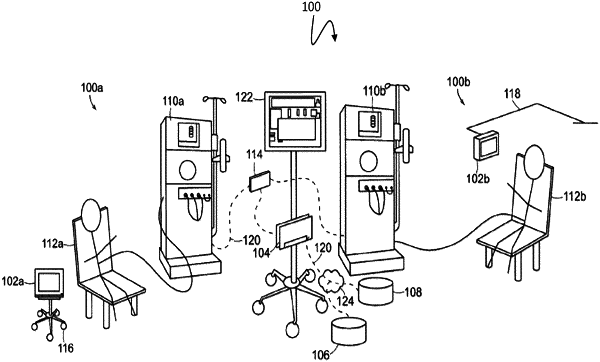| CPC G06Q 30/0201 (2013.01) [G06F 16/258 (2019.01); G06F 16/285 (2019.01); G06N 20/00 (2019.01); G06Q 10/067 (2013.01); A61M 1/14 (2013.01); G06F 40/20 (2020.01); G16H 10/20 (2018.01); G16H 20/40 (2018.01); G16H 40/20 (2018.01)] | 14 Claims |

|
1. A method, comprising:
receiving, by a user experience (UX) computing system, observation data in a plurality of non-standardized data formats, wherein the observation data comprises one or more surveys describing user experiences associated with a plurality of actors interacting with a product or service associated with an enterprise organization;
converting, by the UX computing system, the observation data from the plurality of non-standardized data formats into one or more standardized data formats using a plurality of classification identifiers, wherein the plurality of classification identifiers comprises a section classification identifier associated with a plurality of section data elements, a story classification identifier associated with a plurality of story data elements, and a moment classification identifier associated with a plurality of moment data elements, wherein converting the observation data into the one or more standardized data formats comprises:
breaking down the observation data into the plurality of section data elements, wherein the plurality of section data elements comprises a plurality of structured and unstructured section data elements;
breaking down the plurality of unstructured section data elements into a plurality of first story data elements using artificial intelligence (AI) algorithms;
breaking down the plurality of structured section data elements into a plurality of second story data elements without using AI algorithms, wherein the plurality of story data elements comprise the plurality of first story data elements and the plurality of second story data elements, and wherein each of the plurality of story data elements is associated with a user experience of an actor interacting with the product or service at a plurality of different instances in time; and
breaking down each of the plurality of story data elements into the plurality of moment data elements, wherein each of the plurality of moment data elements is associated with a plurality of variables at a particular instance in time from the plurality of different instances in time;
receiving, by the UX computing system, a request indicating a particular actor model, wherein the particular actor model represents a subset of the plurality of actors;
generating, by the UX computing system, the particular actor model based on the request and the converted observation data, wherein generating the particular actor model is based on:
determining a plurality of binary values from the converted observation data;
calculating an n-dimensional distance between the plurality of actors identified in the observation data based on the plurality of binary values; and
clustering a subset of the plurality of actors together based on the request and using a clustering algorithm;
generating, by the UX computing system, a journey matrix for the particular actor model based on the converted observation data, wherein the journey matrix indicates a plurality of sequential moments describing a nephrologist throughout a dialysis treatment for a patient;
causing display of the journey matrix;
receiving, by the UX computing system, operator input indicating a request for original data associated with one or more moments from the journey matrix; and
based on the operator input, providing, by the UX computing system, at least a portion of the one or more surveys from the observation data, wherein the portion of the one or more surveys comprises quotes or recording samples associated with the one or more moments from the journey matrix.
|